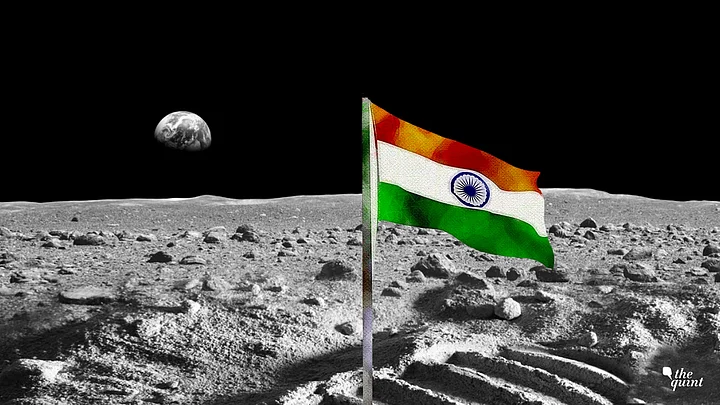The new year has begun with great excitement about India’s proposed human space mission. The Indian Space Research Organisation (ISRO) says it is all set to enter a new phase, with the addition of the human element in its operations.
Till now, the agency has been dealing with rockets, propulsion engines, satellites and payloads in all its missions. Now it has to gear up to deal with humans.
This adds a completely new dimension to ISRO’s working.
Preparing for Human Space Flights
“In a conventional launch vehicle, our payload is only a satellite. When we are talking about Gaganyaan, our payload is human,” ISRO Chief K Sivan had said, addressing the media. The agency’s existing three verticals – launch vehicles, space assets (satellites) and applications – are all engineering heavy. For the human flight, ISRO will need expertise in life sciences, which is an uncharted territory for it. And for this, a new arm called Human Space Flight Centre (HSFC) has been established within the space agency.
Too busy to read? Listen to this instead.
The task of the HSFC has already been cut out – selection of astronauts, their training, developing life-support systems for humans in space, and post-flight rehabilitation.
Since ISRO has announced the launch date of its human mission as December 2021, the new outfit has to get cracking, and now. The American space agency, NASA, which has sent the maximum number of humans to space, takes a minimum of two years for training astronauts, after the initial selection of candidates.
India’s HSFC May Need International Support Before 2021 Odyssey
Facilities for training astronauts are concentrated in three countries which have so far sent humans into space – America, Russia and China. The European Space Agency too has a facility – the European Astronaut Centre in Germany, to train astronauts for participating in missions to the International Space Station. The Japan Aerospace Exploration Agency (JAXA) also has its own astronaut training facility. A commercial astronaut training facility has been announced in the UK.
With HSFC, India is now joining this league. We have had no facilities for training astronauts so far. The Institute of Aerospace Medicine (IAM) in Bangalore – of the Indian Air Force – has expertise, and facilities for civil and military pilots for aspects relating to human endurance. It can deal with certain basic aspects of training for space flights.
While HSFC gets started with the task of selecting astronaut candidates, it will also have to start working on setting up training facilities such as simulators and human centrifuges. Since Gaganyaan’s launch is set to take place barely three years from now, the HSFC may have to look for international collaborations to train astronauts. ISRO’s chairman had hinted at this possibility in the past too.
For ISRO, Sending a Human to Space Isn’t The Only Goal
Advanced training for Indian astronauts may take place in Russia, after the initial one at IAM in Bangalore. A good chunk of Rs 10,000 crore allocated for the Gaganyaan mission will probably be spent on astronaut training, and developing training infrastructure in the country.
Even if HSFC is not fully ready to handle tasks related to the training of astronauts for the Gaganyaan mission, it is set to emerge as the nodal point for all human-related activities of the space agency.
As Sivan has pointed out, the life sciences vertical of the agency is for the long haul. “We are not going to stop with launching humans into space. We are going to continue this programme in terms of a space station and sending a human to the moon,” the ISRO chairman has said. Incidentally, China has already started building a space station, and wants to send a Chinese to the moon.
ISRO’s Step Towards Bridging Gender Gap
The first step towards achieving the December 2021 deadline for Gaganyaan will be the selection of astronaut candidates. The plan is to send three Indians into space for seven days in this human mission. The selection process will be taken up by the space agency in collaboration with the Indian Air Force. And now it is clear that the process will be open to women candidates as well.
It also seems that it will be open to civilians, and not simply be restricted to military pilots.
While Gaganyaan promises not to be a ‘manned mission’, it aims towards a human flight that can include both men and women. This fits well with the space programme, as several top positions in scientific missions of ISRO are held by women, including the post of the nodal officer for the human flight.
Among the most famous ‘Indians’ in space are two women – Kalpana Chawla and Sunita Williams.
The two, along with the first Indian astronaut, Rakesh Sharma, have been role models for young Indian boys and girls who dream of becoming space scientists and astronauts. Hopefully, Gaganyaan and future human missions will help fulfill some of their dreams.
(Dinesh C Sharma is Managing Editor, India Science Wire (ISW), New Delhi, India. He can be reached at dineshcsharma.wordpress.com and @dineshcsharma on Twitter. His latest book is The Outsourcer: The Story of India's IT Revolution, MIT Press. This is an opinion piece. The views expressed above are the author’s own. The Quint neither endorses nor is responsible for them.)
(At The Quint, we question everything. Play an active role in shaping our journalism by becoming a member today.)
